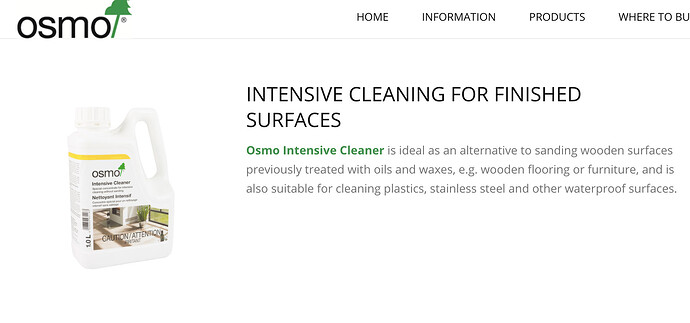I hope I landed in the right spot and hoping to get the attention of some of the ‘chemists’ here like @CaCO3Girl. My question does not regard an exterior project but an interior project.
I have a european white oak floor finished with a 0 VOC , linseed oil. No wax. no formaldehyde. All natural. I want to put a new finish on as this is neither water nor stain resistant. Most manufacturers say to sand the floor before putting a new kind of finish on. My floor has a beautiful brushed finish with nice bevels on both sides. So sanding would take all this out. I have been doing some reading online and disodium metasilicate was mentioned as an alternative to sanding and to de-oil. Turpentine was also mentioned. Anything else you could suggest ? I know outdoor decks are not often sanded but brighteners etc are used to take off old finishes. I know it might sound a litte extreme but thought I’d pose my question here. Thanks for your time.
Hey, Jo. You did well to tag our resident chemist in your post. She likely knows something about something regarding your project. We also have quite a few “wood gurus” here. Maybe @MDA1775 can chime in. Or @SurfaceTherapy.
Hi welcome to the forums. This is a Pressure washing site, not an indoor floor site. You may be best served on going to a site that specializes in flooring.
Linseed comes out with turpentine and a lot of work. FYI brighteners don’t strip wood, strippers strip wood. Brighteners brighten wood.
Thank you !
Yay! I know more about indoor cleaning than I know about outdoor cleaning 
As for your suggestions…NOOOOOOOO!!! Talk to an expert before you do anything. Metso has a pH of around 12.5; you don’t want a high pH material on wood. Metso is a decent hard surface cleaner and not as aggressive as caustic soda which is the main ingredient in most paint strippers but still, it can be harsh. It also can’t emulsify so no idea how it would get the oil out. Turpentine and xylene are sooo strong and again used as paint strippers. That isn’t really what you want to do here.
First off, what kind of coating were you wanting to apply? You have to be super careful with indoor wood. There are two part acrylic systems that will look beautiful but if you get one scratch you won’t be able to fix it. Plus I don’t like two part systems due to the pot life issue.
You then have to move to do you want a waterbased coating…these require reapplication often and the water can change the color of the wood in some cases.
Right now you have an oil in there which may actually stop you from being able to add in the water based coating because oil and water really don’t mix and you get this weird milky stuff that looks horrible. However, due to the oil you likely have a minimal water resistance, so you may want to keep that in mind.
I don’t know what you have available in your location. I suggest you go to a store like Floor & Decor and talk to them about how to seal the wood. If you don’t have one near you they have a phone number on their website and I’m sure they would help you over the phone.
Oh and brighteners on a deck are made of oxalic acid and don’t remove old finishes, they brighten tired looking wood. To remove a finish you need to strip it. Then the stripper is usually so high in pH you need to neutralize it to calm the tannins back down and that’s where the oxalic comes into play…but that scenario only plays out on certain types of wood. In any case you have an indoor project which won’t require a brightener so I’ll stop talking about it now ![]()
I would put a hard wax oil on the floor. So it would be oil on top of oil. The wax makes it both more water and stain resistant. It has a very natural feel without feeling like a plastic film is laid on top of the wood. The wood still breathes but the wax protects it against stains.
Maybe I don’t need to clean it at all and the oils will just bond. I will test it. I found a product made by Osmo that is specifically made for interior floors and to be used in a very diluted form. 1:20 or 1:10 for deep stained floors. They warn if you don’t dilute it will damage or discolor the wood.
I tried to post a screenshot of it here but not sure if that worked.
So here is a link.
Thanks for your input.
https://osmo.ca/wp-content/uploads/sites/5/2018/06/msds-osmo-intensive-cleaner.pdf


